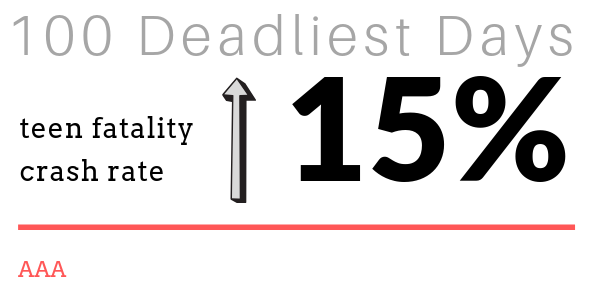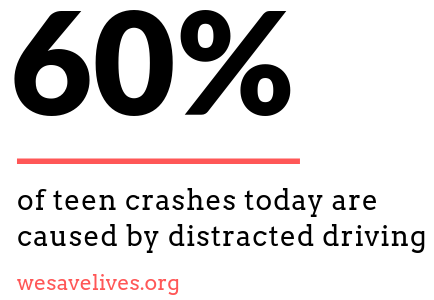100 Deadliest Days has officially begun
Warm weather calls for freedom and fun, the ultimate attraction for teen drivers. Teen drivers hit the road more often in the summer months than any other time of the year. Not only has Memorial Day kicked off the unofficial start of summer, but also began, what AAA has dubbed, “100 deadliest days.” According to AAA, crashes involving a teen driver jump by 15 percent in the summer months compared to other months of the year.
“Not only are teens themselves more likely to die in car crashes, they also have the highest rates of crash involvement resulting in the deaths of others, including passengers, pedestrians or occupants of other vehicles.”
– Newsday
Parental involvement is key to teaching teens safe driving. AAA has outlined 8 talking points to help make the safe driving talk a little bit easier:
-
Seat belt
It is the law to buckle up everywhere, but New Hampshire and the District of Columbia. Teens tend to buckle up much less frequently than adults so, it is important to emphasize the safety importance of fastening their seatbelt as soon as they get in the vehicle.
-
Limit Distractions
Distractions create an opportunity for an accident. A distraction is categorized as anything that causes you to take your eyes off the road. 60% of teen crashes today are caused by distracted driving and cell phone usage is surprisingly not at the top of the list. However, texting while driving increases the risk of a crash by 23 times. Be sure to encourage teen drivers to put their phone out of reach when driving and turn on the “do not disturb” feature which will silence any incoming calls or texts.
-
Speeding
Over the past 5 years, teen drivers were involved in nearly 14,000 fatal crashes and more than 4,200 of them involving speeding. Driving instructors identified speeding as one of the top three mistakes teens make when getting behind the wheel.
-
Drinking and driving
No one should drink and drive. For every 100,000 Americans under the age of 21, 1.2 people were killed in drunk driving fatalities in 2017. Let teens know that if they were to get themselves in an impaired driving situation, they can call for a ride home without consequences.
-
Limit teen passengers
The top distraction for teens is other passengers. 15% of teen crashes are due to passenger distractions, compared to 12% caused by cell phone use. Enforce firm driving rules against driving with other teen passengers as well as being a passenger in another teen driver’s car.
-
Restrict night driving
Chances for a teen driver to be involved in a crash double when driving at night. AAA recommends that new teen drivers should not drive after 9 or 10 p.m. unless they are with a responsible adult. Be sure to check Graduated Driver Licensing (GDL) laws to get caught up on night driving restrictions by state.
-
Roadside emergencies and maintenance
Go over how to respond if an emergency arises. This can include how to fix a flat tire, who they should call, where to pull over, etc. It is important to prepare them for the unexpected since teen drivers are more likely to underestimate potentially hazardous circumstances.
-
Create a parent-teen driving agreement
Establish a set of family rules and consequences for breaking them.
Teen safe driving practices start with parents. Be conscious of your own driving habits, especially around new teen drivers. If you are wearing your seat belt, limiting distractions and obeying traffic laws when behind the wheel, then your teen is more likely to follow these habits.
0 Comments
Leave a reply
You must be logged in to post a comment.







